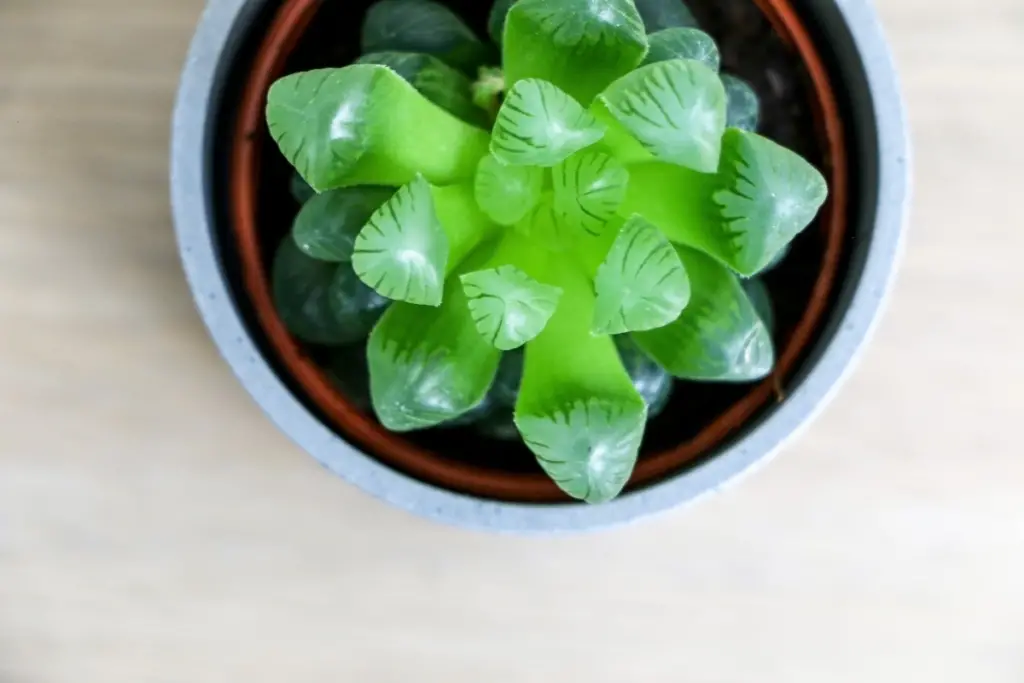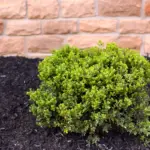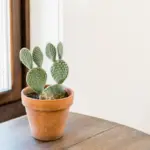Haworthia Cooperi is a small and slow-growing succulent that is native to South Africa.
This cushion aloe plant is a popular choice among gardeners and plant enthusiasts due to its unique appearance and easy-care requirements.
Its tiny fleshy leaves grow in rosette clumps, and its transparent leaves give it a distinct look.
To grow and care for Haworthia Cooperi, it is important to provide it with the right growing conditions.
This plant prefers bright but indirect sunlight, and it should be planted in well-draining soil.
Overwatering should be avoided, as this can lead to root rot. Additionally, Haworthia Cooperi can be propagated easily through offsets, making it an ideal plant for sharing with friends and family.
Whether you are a seasoned plant enthusiast or a beginner, Haworthia Cooperi is a great choice for adding interest to your indoor or outdoor garden.
With proper care and attention, this unique succulent can thrive and become a beautiful addition to any collection.

Table of Contents
What Is Haworthia Cooperi
Haworthia Cooperi is a small, slow-growing succulent plant that belongs to the Haworthia genus in the Asphodelaceae family.
It is native to South Africa and is commonly known as Cushion Aloe or Cooper’s Haworthia.
This plant is a popular choice for indoor gardening due to its unique appearance and easy maintenance.
Origin And Description
Haworthia Cooperi is native to the Eastern Cape Province of South Africa. It grows in rocky outcrops and dry riverbeds, where it receives bright but indirect sunlight.
This plant has thick, fleshy, and translucent leaves that grow in a rosette pattern. The leaves are usually light green with transparent tips and darker longitudinal lines.
The plant can reach a height of 12 inches (30 cm) and up to 3.2 inches (8 cm) in diameter.
Different Varieties
There are several varieties of Haworthia Cooperi, each with its unique characteristics.
The most common varieties are:
- Haworthia Cooperi Var. Cooperi: This variety has triangular-shaped leaves with transparent tips and dark longitudinal lines. It is the most commonly grown variety of Haworthia Cooperi.
- Haworthia Cooperi Var. Pilifera: This variety has thin, thread-like leaves that grow in a rosette pattern. It is also known as the Fairy Washboard Haworthia.
- Haworthia Cooperi Var. Truncata: This variety has short, stubby leaves that grow in a rosette pattern. The leaves are usually dark green with transparent tips.
Growing Haworthia Cooperi
Haworthia Cooperi is a small, low-growing succulent that is native to South Africa. It is a popular houseplant due to its unique appearance and ease of care.
Here are some tips on how to grow and care for this plant.
Ideal Growing Conditions
Haworthia Cooperi prefers bright, indirect light. It can tolerate partial shade, but direct sunlight can cause the leaves to fade and develop a yellow or reddish tinge.
The plant prefers warm temperatures between 70°F and 80°F (21°C to 27°C) and can tolerate temperatures as low as 50°F (10°C).
The plant needs well-draining soil that is rich in organic matter. A mixture of cactus soil and perlite or pumice is ideal.
The plant can grow in a small pot, but it needs to be repotted every two to three years to prevent overcrowding.
Planting Procedure
When planting Haworthia Cooperi, make sure the pot has drainage holes to prevent waterlogging.
Fill the pot with soil and make a small hole in the center. Gently remove the plant from its container and loosen the roots.
Place the plant in the hole and cover the roots with soil. Press the soil down gently to secure the plant.
Watering And Feeding
Haworthia Cooperi is drought-tolerant and does not need frequent watering. Water the plant when the soil is completely dry, about once every two to three weeks.
Overwatering can cause root rot, so make sure the soil has good drainage.
The plant does not need fertilizer, but you can feed it with a balanced liquid fertilizer once a month during the growing season. Do not fertilize during the winter months when the plant is dormant.
- HIGH QUALITY: Fully Rooted 4 Inch Haworthia Cooperi Succulent. All Haworthia Cooperi Succulent Plants Are Picked from Our Greenhouses the Same Day We Ship to You.
- Create Your PLANT SANCTUARY: Create the Indoor Space of Your Dreams with a Relaxing & Peaceful Haworthia Cooperi Succulent Plant.
- FAMILY FARM: We Have Over 55 years of Experience Growing Healthy & Hardy Succulents.
- LOW MAINTENANCE: Only Water You’re Amazing Haworthia Cooperi Succulent Once Every Month.
- BECOME A PLANT PARENT: Buy Now to Become Responsible of the Growth and Development of Your Incredible Haworthia Cooperi Succulent Pla
Prices pulled from the Amazon Product Advertising API on:
Product prices and availability are accurate as of the date/time indicated and are subject to change. Any price and availability information displayed on [relevant Amazon Site(s), as applicable] at the time of purchase will apply to the purchase of this product.
Caring For Cushion Aloe Plants
Haworthia Cooperi is an easy-to-care-for succulent that can thrive both indoors and outdoors. Here are some tips on how to care for your cushion aloe plant to keep it healthy and happy.
Light Requirements
Haworthia Cooperi plants require bright, indirect light. They can tolerate some direct sunlight, but too much can cause the leaves to burn.
If you’re growing your plant indoors, place it near a south or west-facing window where it can get plenty of light.
If you’re growing your plant outdoors, make sure it’s in a spot that gets partial shade during the hottest part of the day.
Temperature And Humidity
Haworthia Cooperi plants prefer warm temperatures between 65°F to 80°F (18°C to 27°C).
They can tolerate cooler temperatures down to 50°F (10°C) but should not be exposed to temperatures below 40°F (4°C) as it can cause freezing injury.
These plants also prefer low humidity levels and can tolerate dry air.
Pruning And Repotting
Haworthia Cooperi plants do not require much pruning.
However, if you notice any dead or yellow leaves, it’s best to remove them to prevent any fungal or bacterial infections.
Repotting is only necessary when the plant has outgrown its current container. When repotting, use a well-draining soil mix and a pot with drainage holes to prevent waterlogging.
Common Problems And Solutions
Haworthia Cooperi is a relatively low-maintenance plant, but like any other plant, it can face some problems.
Here are some common problems and solutions for Haworthia Cooperi:
Pest And Disease Control
One of the most common pests that can attack Haworthia Cooperi is mealybugs. These pests are tiny, white, and cottony in appearance.
They suck the sap from the plant and can cause wilting and yellowing of leaves. To control mealybugs, you can use a cotton swab dipped in rubbing alcohol to wipe them off the plant.
You can also use insecticidal soap or neem oil to control the infestation.
Another common disease that can affect Haworthia Cooperi is root rot. This is caused by overwatering, which leads to the roots becoming waterlogged and rotting.
To prevent root rot, ensure that the soil is well-draining and that the plant is not sitting in water. If you suspect root rot, remove the plant from the soil, cut off any rotten roots, and repot it in fresh, well-draining soil.
Overwatering And Root Rot
Overwatering is one of the most common problems that Haworthia Cooperi faces. This can lead to root rot, which can be fatal to the plant.
To prevent overwatering, ensure that the soil is well-draining and that the plant is not sitting in water. Water the plant only when the soil has completely dried out.
If you notice that your Haworthia Cooperi is showing signs of root rot, such as yellowing or wilting leaves, mushy roots, or a foul smell, it is important to act quickly.
Remove the plant from the soil, cut off any rotten roots, and repot it in fresh, well-draining soil. Water the plant only when the soil has completely dried out.
Propagating Haworthia Cooperi
Haworthia Cooperi can be propagated through seeds, offset division, or leaf cutting. Each method has its own advantages and disadvantages.
Gardeners can choose the method that suits them best.
Seed Propagation
Seed propagation is a simple and easy method for propagating Haworthia Cooperi. Gardeners can purchase seeds online or collect them from mature plants.
Once the seeds are collected, they should be sown in a well-draining soil mix.
The soil should be kept moist but not wet, and the seeds should be kept in a warm, bright location. Germination usually occurs within two to four weeks.
Leaf Cutting Propagation
Leaf cutting propagation is another popular method for propagating Haworthia Cooperi. To propagate through leaf cutting, gardeners should select a healthy leaf from the mother plant.
The leaf should be removed cleanly from the stem using a sharp, sterilized knife. The cutting should be left to dry for a few days until a callus forms on the cut end.
Once the callus has formed, the cutting can be planted in a well-draining soil mix. The soil should be kept moist but not wet, and the cutting should be kept in a warm, bright location.
Roots usually develop within a few weeks, and new growth will begin to emerge from the base of the cutting.
Propagation is a great way to increase the number of Haworthia Cooperi plants in your collection.
Gardeners can choose the method that suits them best and enjoy watching their plants grow and thrive.
Conclusion
In conclusion, growing and caring for succulent Haworthia Cooperi plants can be a rewarding experience for any plant enthusiast.
With the right conditions and proper care, these cushion aloe plants can thrive and add beauty to any indoor or outdoor space.
By following the tips and guidelines outlined in this comprehensive guide, you can ensure that your Haworthia Cooperi plants remain healthy and vibrant for years to come.
- How to Dry Basil Leaves: A Professional Guide
- Is an Avocado a Fruit or Vegetable? Simple Answer and Explanation
- Does Pineapple Have Seeds? Exploring the Anatomy of Pineapples
- Blooming Through Winter: Can I Grow Vegetables Indoors in the Winter?
- What Can You Grow in a Greenhouse All Year Round: A Guide to Year-Round Greenhouse Gardening
- Are Blueberries Blue? Debunking the Myth of Their Color

















